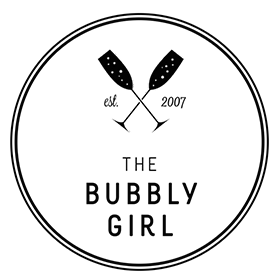
The Ferrari Metodo Classico prestige cuvée is called Giulio Ferrari, after the founder. It’s aged for a mind-blowing 10 years before bottling. In that time, the yeast creates heavenly toastiness and depth, though the freshness of the 100% chardonnay wine persists.
I’ve sipped a lot of sparkling wines in the past several years, but I was intrigued when I was invited to taste Ferrari sparkling wines. They’re from Italy, but they don’t make prosecco, Moscato or sports cars. Rather, Cantine Ferrari makes fine, metodo classico (classic method) sparkling wine.
While I love discovering methode champenoise sparkling wines from around the world, I have a tendency — like others — to compare them to the sparkling wines of Champagne. The best champagne has this electricity to it, a combination of elegance and power. Few sparkling wines made elsewhere have this quality, but Ferrari Metodo Classico does.
As I took my first sip of the Ferrari NV Brut, I might have thought the toasty nose and bright golden apple flavor sprang from the famed chalky soils of Champagne. But Matteo Lunelli was sitting next to me in a private dining room at Spruce in Presidio Heights, eager to talk about the beauty of his family’s wines from Trentino-Alto Adige.

- Ferrari Metodo Classico is a line of fine sparkling wines from Northern Italy’s Trento DOC that drinks like champagne. Here the Ferrari Perlé 2004 during a tasting at Spruce SF.
“Italian sparkling wine is very well appreciated. But there is a very low understanding of the high end sparkling wine,” he says, managing not to smile at his play on words.
For all it delivers, the 100% chardonnay Ferrari NV Brut is a shockingly affordable $25. The next wine, the Ferrari NV Brut Rosé with 60 % pinot noir/40% chardonnay, tastes of effervescent plums and red berries. It’s dreamy with confited duck leg paired with a bittersweet duo of roasted pears and three kinds of endive, showing how well sparkling wine pairs with a range of foods.

At Spruce SF, duck leg confit with pears and roasted endive paired beautifully with the Ferrari Brut Rosé and the Perlé Rosé a vintage wine with pinot noir and chardonnay from special vineyards. Yes, sparkling wine is perfect for pairing with food.
Besides the beautifully crafted wines, Ferrari has a good story, too. The winery was founded in 1902 by Giulio Ferrari, an enologist who studied at Montpelier in France and San Michele all’ Adige, a prestigious Northern Italian wine school. Ferrari was a big thinker who wanted to elevate wine from a rustic, agrigultural product to something more fine and artistic. He realized that the cool climate and rocky hillsides of the Trentino Alto Adige on the edge of the Alps would be perfect for growing chardonnay and pinot noir. Ferrari is credited as the first to plant chardonnay in Italy.
His wines were soon poured by the finest hotels and cruise ship lines in Italy. After 50 years of building his winery, Ferrari ended up without heirs. He turned to his friend Bruno Lunelli — a family man and wine merchant — and told him he should buy the winery and continue his legacy. And so he did in 1952, paying it off over the years.
“Excellence is not a single act, it is an attitude,” is a favorite Aristotle quote that Lunelli says guides his family’s wine-making philosophy.

Matteo Lunelli, Chairman of the Lunelli Group which makes Ferrari Metodo Classico, says his father “always presented it as a great opportunity, but never forced me” to join the family wine business.
Here’s what I’ve noticed about the less expensive, international sparkling wines that shine next to champagne. They’re grown in a cool climate or at a higher elevation, ensuring that the wines have crisp acidity and beautiful aromas. Choosing the right grape varietal for the area — be it xarello in Spain’s Penedes or chardonnay and pinot noir as Ferrari does — is critical. Longer aging on yeast matters too. Rather than rushing the wine to market, which would be cheaper, most Ferrari sparkling wines age on the yeast for a minimum of three years. The spectacular Giulio Ferrari 2001, the current vintage of their prestige cuvée, spends TEN years on the yeast, giving it this yummy, buttery richness, aromas of brioche and nuts. And all the Ferrari wines are crafted from pesticide-free grapes; I’ve noticed an extra-sheer quality in wines made from naturally raised grapes.
So, it’s no surprise that Ferrari Metodo Classico is the toast of Italy, poured at the Italian president’s house and events like the Venice Film Festival and the World Cup. It’s also appreciated by American cognoscenti at spots like to A16 in San Francisco to Eataly in NYC.
And now that I know, about this game-changing Italian sparkling wine, I’ll be joining them.


